At the risk of sounding like a shill for the place we're staying, let me report that La Grande Maison continues to be a huge highlight of the trip thus far. Shortly before I finished the last blog entry, one of our innkeepers invited all the guests down to tour the cave—a small network of underground tunnels that probably pre-date the 14th-century house. They were originally used by troglodyte peoples, and were later adapted to wine storage and winemaking. The creamy, crumbly local tuffeau limestone, on and of which most of the buildings are built, was soft enough for the troglodytes (and later the winemakers) to hollow out tunnels with nothing more sophisticated than an axe, and you can still see the ancient axe-marks where these tunnels were hacked away. Apparently, they would even bring their cattle into the tunnels during the winter, keeping them in a larger, hollowed-out ventilation shaft at the narrow end of one tunnel. The tunnels are narrow—intentionally so, since the troglodytes wanted any potential hostile encounters to be one-on-one—and I can't really imagine fitting a cow down there. Nonetheless, it was apparently done.
One of the caves is quite large, and was used from the 14th to the 20th century as the estate's wine-making center. Hollowed out under the vineyard itself, it was equipped with a stone chute that enabled the harvesters to heave the harvested grapes directly into the underground press area, where they would be stamped by foot—or, later, crushed with mechanical presses that were first wood and then metal. The same area also featured the estate's pigeon-cote, a cylindrical underground room with several thousand individual rectangular partitions around the inside, where pigeons nested in the heyday of the manor. Residents would eat the eggs and the baby pigeons—and, we assume, the older adult pigeons, although they probably wouldn't have been as tasty. The number of partitions allowed was regulated by royal mandate according to the amount of land the family owned, and the one here proves the family here was quite wealthy during the 17th century and earlier. Some of the partitions around the bottom of the room are blocked up, and apparently there's documentation about this: in 1706 the family lost some of their land, and were therefore required to reduce the pigeon capacity in their tower. They would have been required to reduce it still further as their estate dwindled, but the French Revolution intervened, abolishing the former system of royal taxes. It was so fun to talk to Sue about what they've managed to unearth about the history of the house, as she obviously loves the place. I feel lucky that we get to share it with her and Michaela (and their three hilarious Springer Spaniels) for a few days.
When we finally tore ourselves away from our fascinating accommodations, we decided to tackle the longish drive to Château Villandry, whose famous gardens intrigued me ever since I first read about them while researching the trip. And man, they are stunning. Even for someone like me, a non-gardener and no particular aficionada of the formal garden style, being in the midst of these, or looking down at them from the many terraces around the property, is a remarkable experience. Especially with my narrow-angle lens it is difficult to capture the scale of these, but I'll try to give you a little taste.
The portion of the garden that gets the most publicity, and which originally caught my interest, are the ornamental Renaissance "love gardens." Laid out in four large squares of planted box, edged with topiaried yew trees, each square depicts one of the "four types of love." To the left in the above photo you can see the "tender love" garden, with its pink roses and heart motifs. There are also motifs among the hearts meant to mimic masks worn at masquerade balls, which apparently spelled tenderness to the French Renaissance mind. To the right you can glimpse the "passionate love" square, whose box hedges feature swirling triangle motifs meant to symbolize a heart torn to pieces by passion, and also the swirling motion of dancers on a ballroom floor. In the foreground there's a tiny glimpse of the "fickle love" square, which features fan motifs and cuckold horns, and the last square depicts "tragic love," with dagger-shaped motifs and red blooms imitating blood. Let me just add here, that I question whether these four types of love are an exhaustive list or even different "types" at all—surely tragic love often comes about because it is also either fickle or passionate, and often both? Nevertheless, planning out a garden on such a narrative scheme greatly appeals to me.
Next to the love garden is the music garden, featuring more box and an appealing color scheme involving gradations of green with bits of purple mixed in. Musical motifs include lyres and other instruments, and schematic metronomes in the shape of triangles. Our audioguide informed us that there is an amazing 52 kilometers (32 miles) of box throughout the Villandry gardens, and that all the weeding around the base of the box must be done by hand because of their delicate root systems. Holy moly. All the topiary is also shaped by hand.
It didn't take us long to start wondering how many gardeners the estate keeps on staff to care for all of these elaborate gardens, and our audioguides obligingly informed us, as we walked through the greenhouse area, that there is a full-time staff of nine, plus two part-time apprentices. Frankly, this does not seem like very many people to me. Based on the size of the place I would have guessed at least twice the number. Nine people must work HARD to keep the place up, especially with all that hand-weeding around box roots, hand-trimming of topiary, and all the seeding and starting they do themselves in their greenhouses (about half the plants in the place are sprouted on-site).
Unexpectedly, one of my favorite areas at Villandry was the sparse and open, yet extremely restful, water garden. Very much in the formal French style toward which I don't normally gravitate, the large reflecting pool surrounded by wide swaths of green and lined with lime trees is nevertheless an extremely restful and meditative place to be. (It also reminded me of the Alain Resnais film Last Year at Marienbad, which lent the whole thing a slightly surreal, fragmented quality.) It was a very warm day, and the dappled light under the lime trees was the perfect setting for languid movement.
There is, of course, a labyrinth section of the gardens, through which giggling and shrieking children were chasing each other with great glee. At the outer edge of the maze is a small garden devoted to the Villandry Rose, a strain developed particularly for this garden. It's pink, and richly fragrant.
The recently-added "sun garden" is done in a more mixed, cottagey style, although the shapes of its garden areas are apparently taken from Renaissance-era plans. In this garden in particular, but really over the whole estate, it seems like the Villandry decision-makers are making an effort to institute sustainable practices. The plants in the sun garden require little water beyond what the valley naturally supplies, and the large reflecting pool in the water garden, together with the fountains, and the irrigation system for the kitchen gardens, are constantly recycling water. In the kitchen gardens, the crops (which look to be the most amazingly happy veggies I have ever seen) are harvested and shared among the owners of and visitors to the château, and those that can't be eaten in time are composed back into the earth.
The kitchen garden was probably the most fascinating section of Villandry. It's vast—far larger than I'm able to convey here—and the vegetables are planted in geometrical beds, with crops of different colors alternating to create a complex checkerboard effect. Apparently, this alternation of crop color and geometric patterning is a tradition that dates back to medieval monastic life. The monks would also plant a rose tree at each veggie bed—my understanding being that the color of the rose would indicate which monk was responsible for that bed. The Villandry gardens were never tended by monks, but they combined traditions from French monastic gardening with new Italian influences to create a hybrid style.
Another interesting tidbit about the original layout of the kitchen garden concerns the choice to put it right at the foot of the château. This is not the usual placement for such a utilitarian garden (although I think it's visually stunning), but apparently around the time of its original design, the owner had imported some new, unheard-of vegetables from the New World—tomatoes, eggplants (aubergines), and peppers, among others—and he was eager to supervise personally the planting and cultivation of these exciting new plants. I love this detail because it gives me such a vivid mental picture of the then-owner of the château: an excitable, possibly officious man who bustled down to check on his squashes at the least provocation, no doubt fretting about them during adverse weather, and driving his gardener crazy with his anxiety for their successful adaptation to French soil.
Since my mom is a gardener and had specifically asked about French gardens, I thought about her a lot during our trip to Villandry, and probably would have even if she hadn't asked. In particular I kept thinking about a particular conversation we had a month or so ago about her recently-discovered preference for gardens that maintain space between the plantings. At the time I thought immediately of Japanese style gardening, but I realized today that typically French style gardens do a similar thing, even though the end effect between Japanese and French is so different. An unexpected connection.
After Villandry, we drove our meandering way back toward La Grande Maison, stopping in the little town of Notre Dame de Puy for dinner at a local restaurant recommended by our hosts. The food and wine were excellent, and we ate them sitting outside on the corner of a narrow village street next to the town church, whose bells rang so enthusiastically at 7:05, and for such an extended period, that we theorized some town kids may have broken into the bell tower. As the sun set, a cloud of swifts circled the church spire. It was lovely. And today, we're on to the Bordeaux area, after having encountered the first area of France I feel I must return to: I have really loved the Loire Valley.
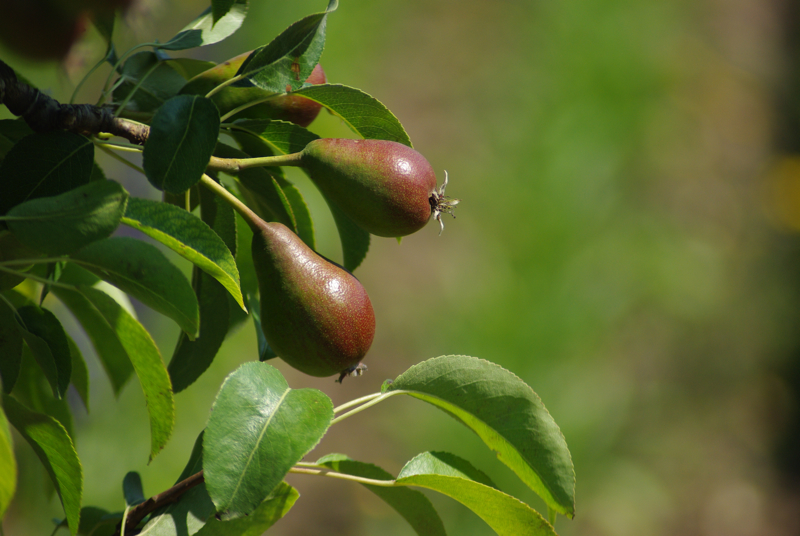
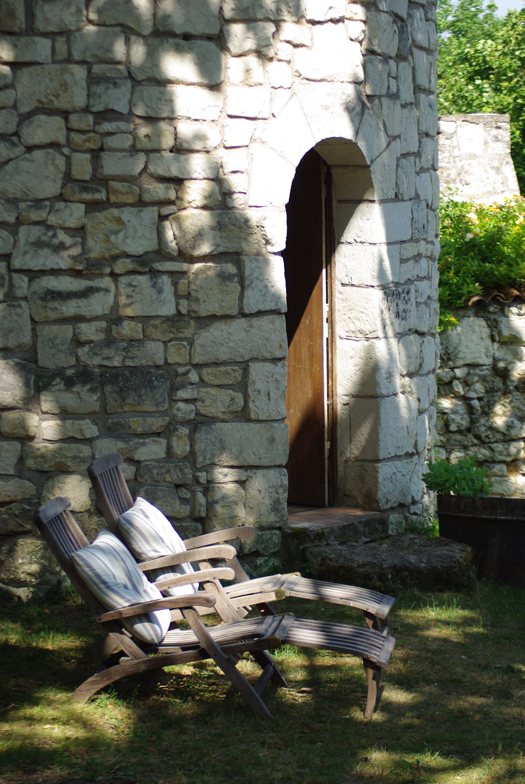
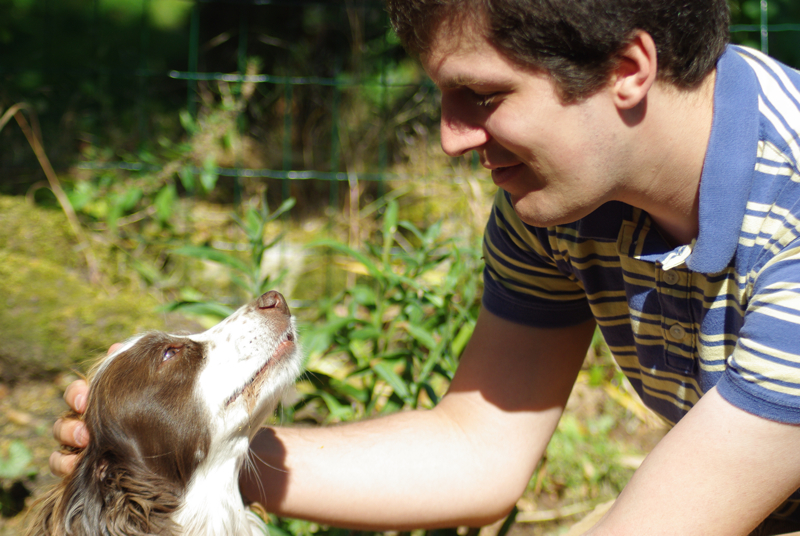
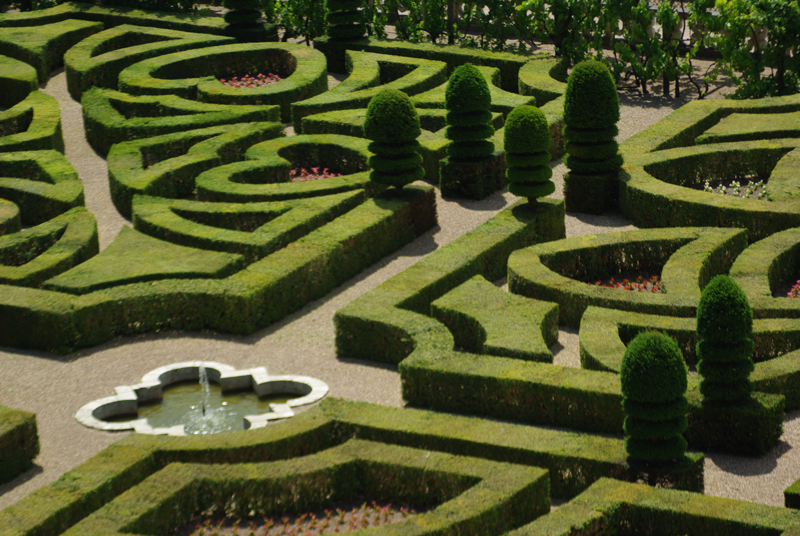
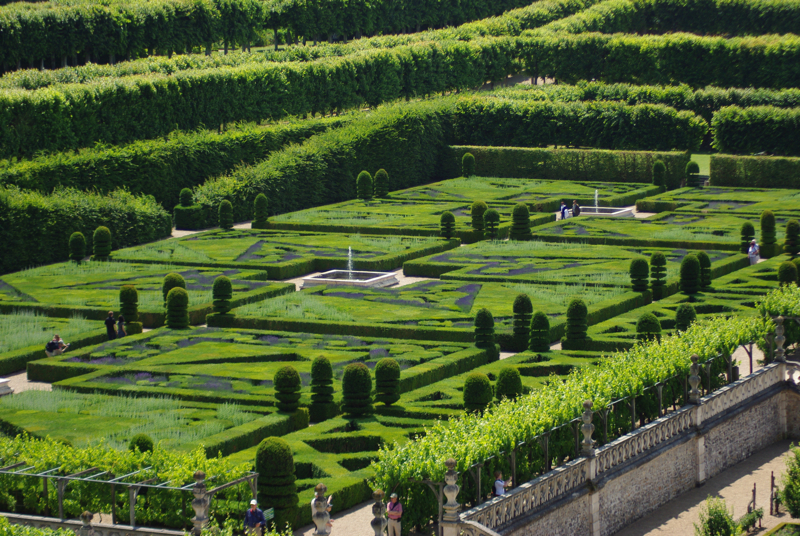
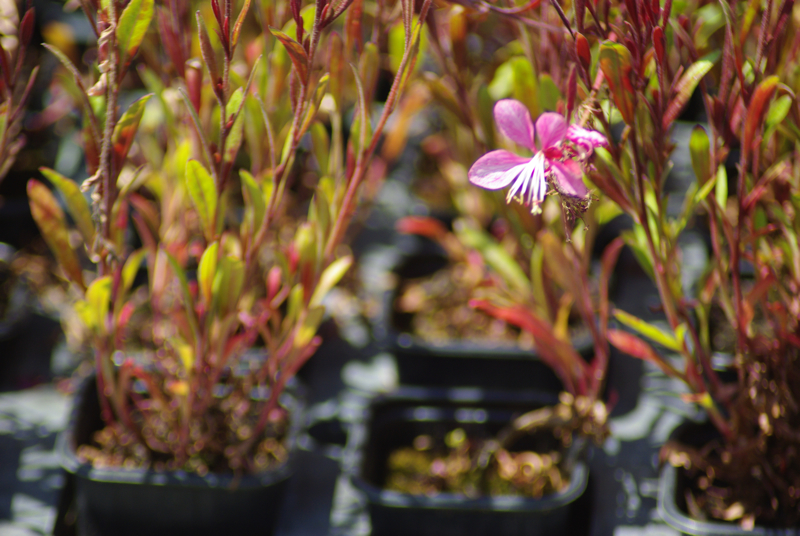
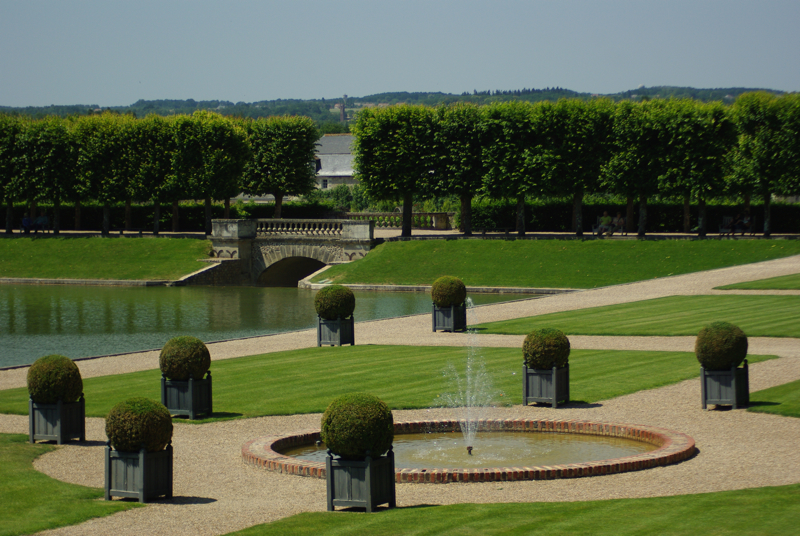
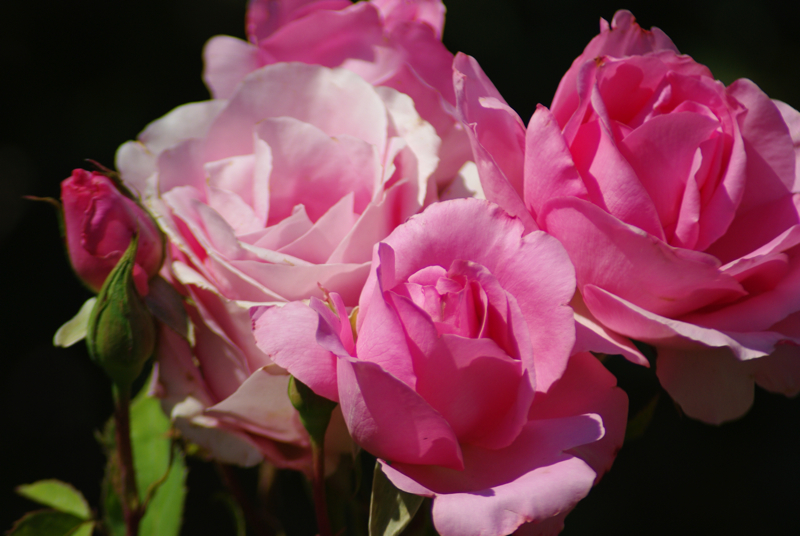
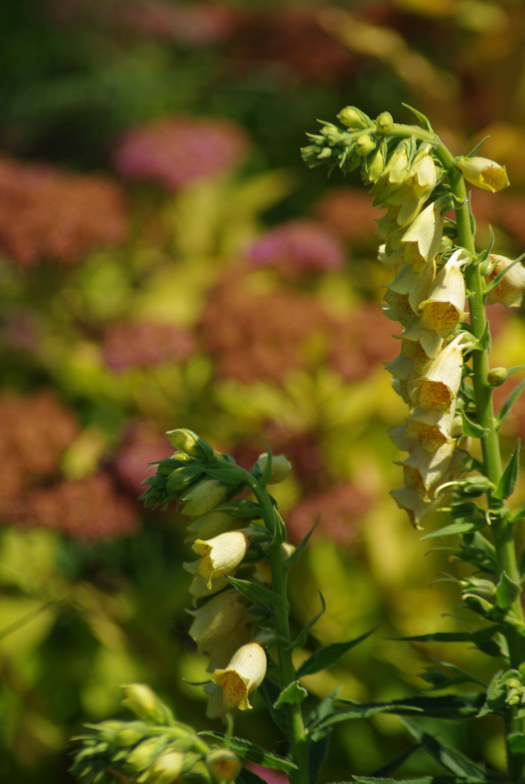
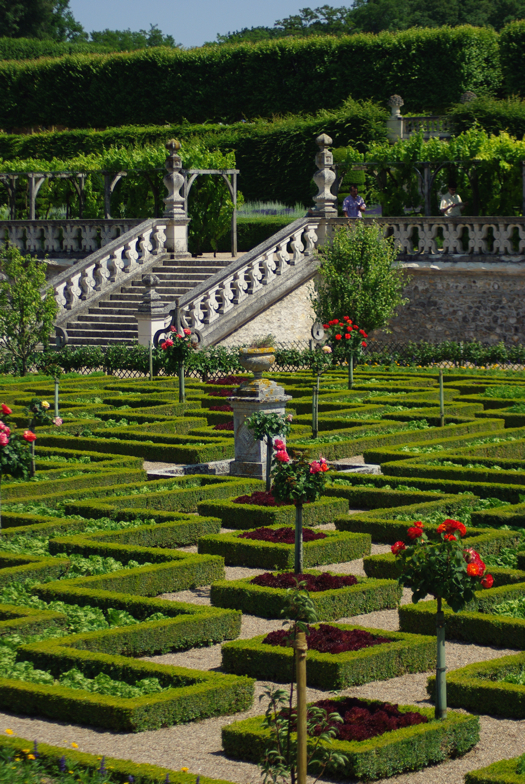
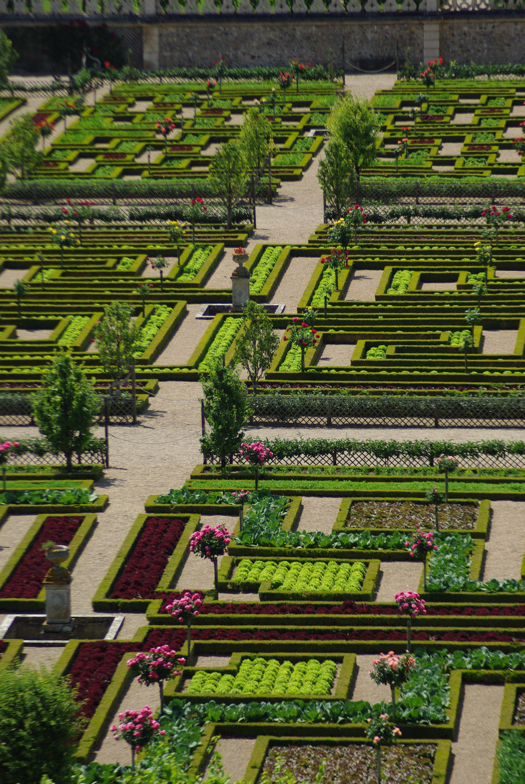
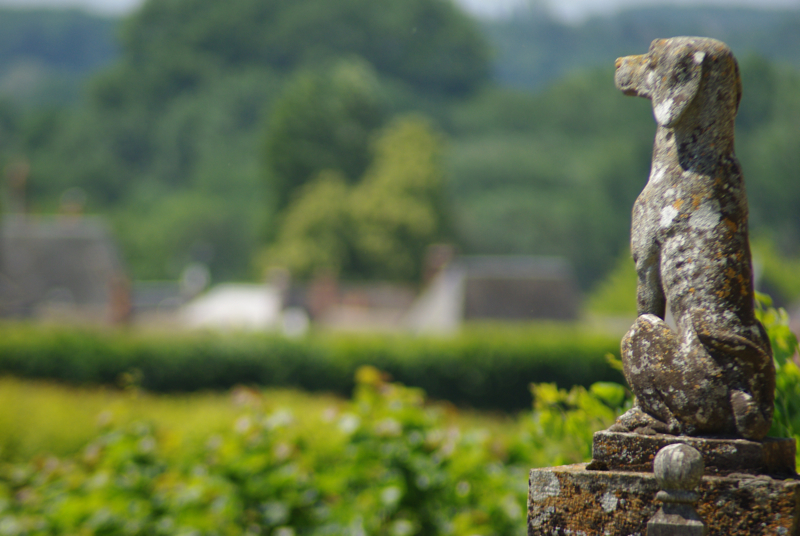
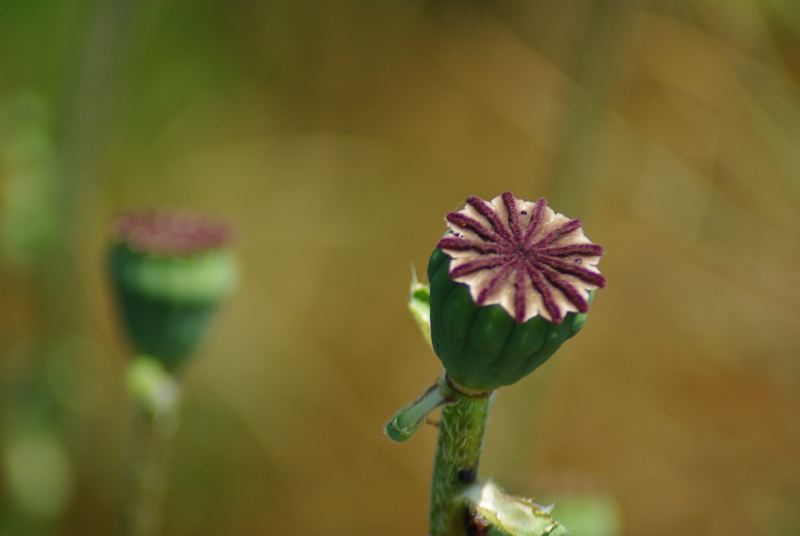
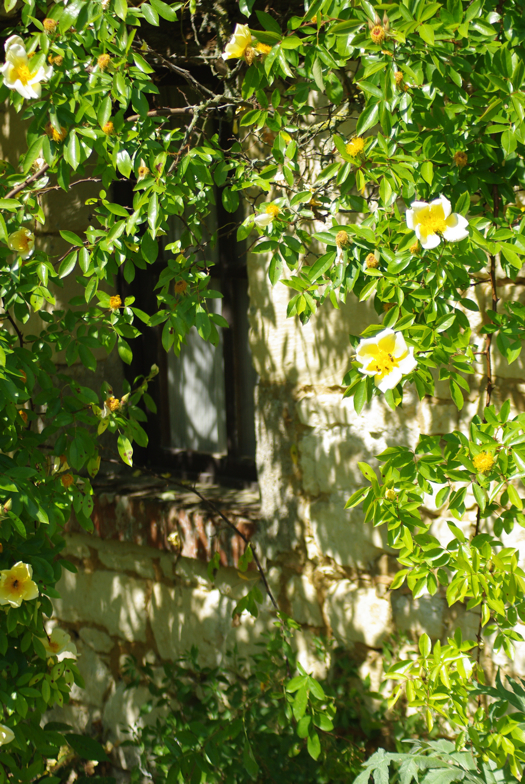
I'm a sucker for gardens! Gorgeous! Hope you're havin the time of your lives!
We are having a great time! :-) The gardens have been a surprising high point.
Greetings Again,
Louise on lap with little paws on the desk, 'helping' me type. These gardens are so fantastically perfect and, as you pointed out, like Japanese gardens: controlled, spacious, restful, spiritually tuned. This takes such discipline. The kitchen garden is especially breathtaking.
I hope you are having another wonderful day.
Love to you both.
I thought you would really like the kitchen gardens. I liked how they beautifully illustrated the point that the "practical" versus "beautiful" divide does not have to be an opposition but can be united so seamlessly. An inspiration! I love the idea of practical things also being beautiful, and beautiful things made to be used. :-)
Wow, the place is really beautiful I love all the photos you posted here. A very nice place to visit. - Paul Kadri
The success of the students and individuals is linked with custom essays review and the good research skills. Essay writing the process is vital and interesting. The process is very inquisitive and productive.
We offer overnight delivery throughout the UK of affordable DIY artificial & synthetic grass products, fake lawn offcuts, astro turf, putting greens and a range of installation tools.
Troglodytes are typically depicted as stereotyped cave individuals. The truth of the matter is that in all likelihood from in any event the old rock age we lived in engineered lodging.
Key review. Signify best calls for got prepared for fulfilling a while to assemble such a data records using which as often as possible as would be sensible could fundamental! best online broker
wow this is amazing and it looks like everything is so perfect for the day regards learn more about france facts and other random fact and enjoy
The Chateau of Villandry, in the Center-Val de Loire district, is a Renaissance chateau that is situated at the heart of three levels of terraced greenery enclosures. Despite the fact that the bequest is eminent for the concordance of its engineering, Help Services By Assignment Empire it is particularly notable for its gardens that spread across three terraces and combine aesthetics, assorted qualities, and harmony.